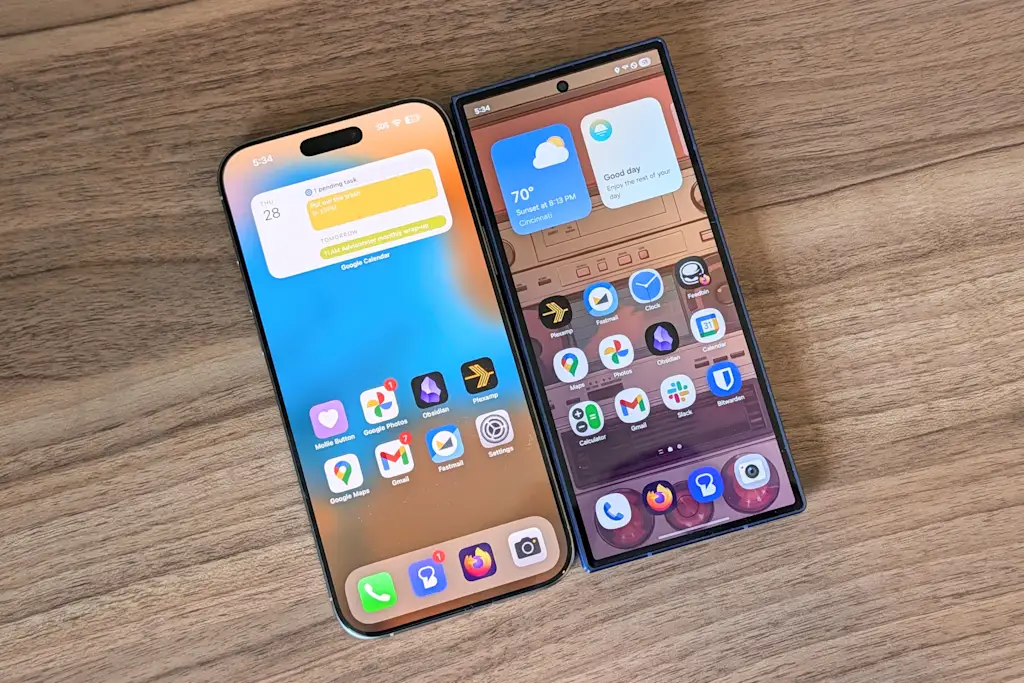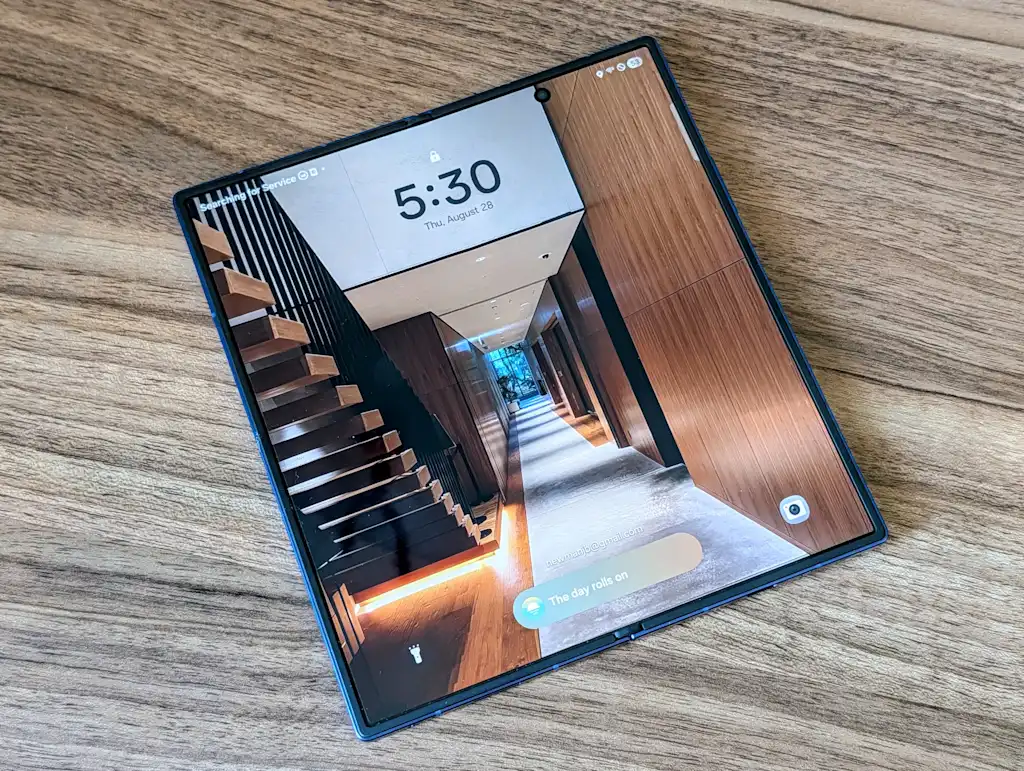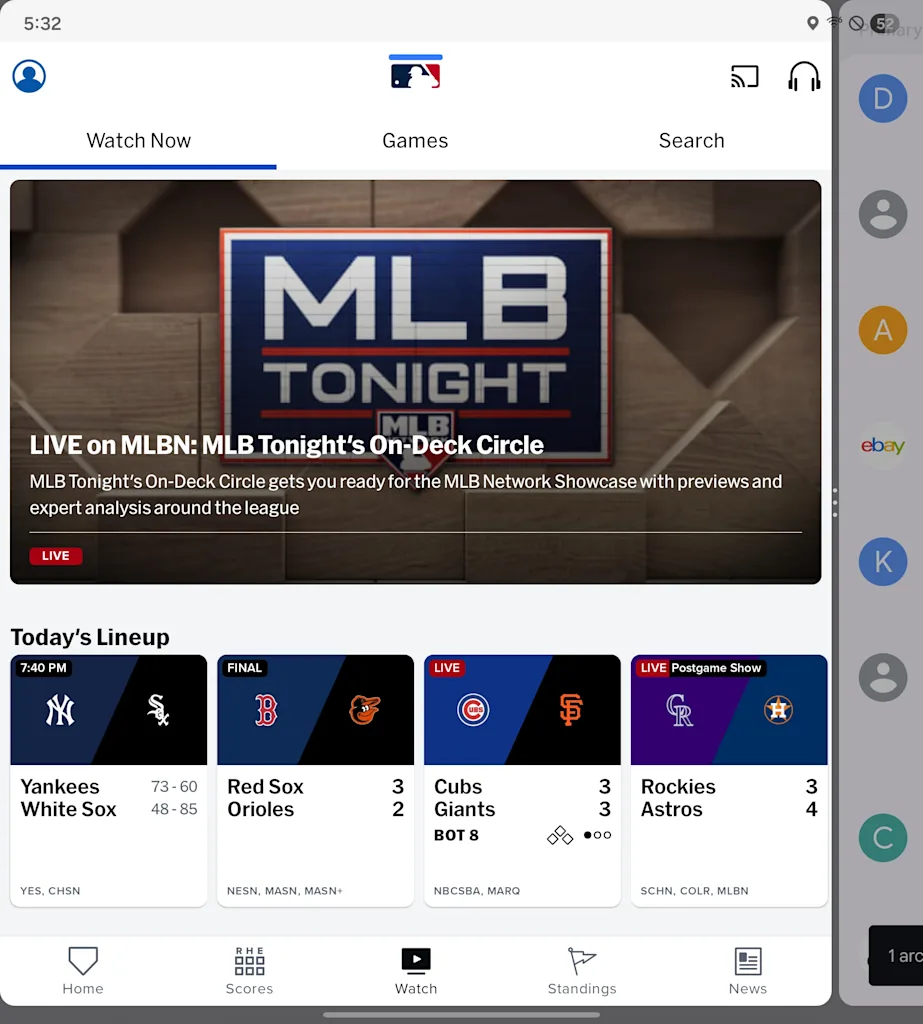There’s no other phone I’d rather be using right now than Samsung’s Galaxy Z Fold7—and that’s a problem.
I’ve been a foldable phone appreciator for a while now, and a couple of years ago, I caved and bought a Galaxy Z Fold5 for my own personal use. The phone was far from perfect, but I loved being able to conjure a small tablet from my pocket to watch videos, read e-books, and multitask.
Two years later, it is really hard going back to that phone—or to any non-foldable phone, for that matter. Using the Fold7 on loan from Samsung has emphasized just how compromised those earlier efforts were, and it makes those prior shortcomings a lot harder to overlook.
It’s a normal-size phone now
Unlike a lot of other reviewers, I never hated the narrow outer screen on Samsung’s previous foldables. Compared with other large smartphones, that screen was easier to use one-handed, and I grew accustomed to only using it on the go.

But yes, it is nicer having a foldable phone whose outer screen works in any scenario. The Fold7’s 6.5-inch outer screen is about 8 millimeters narrower across than an iPhone 16 Pro Max, so the ease of using it one-handed isn’t entirely gone. But unfolding it when I’m on the couch or at the kitchen counter doesn’t feel as much like a necessity.
The bigger deal, though, is the extent to which the Fold7 feels like a regular phone now. When folded shut, it’s 3.2 millimeters thinner than last year’s Fold6, and only about 0.7 millimeters thicker than an iPhone 16 Pro Max. It’s also 12 grams lighter than Apple’s largest phone, and they just don’t feel all that different anymore. You could even put a case on the Fold7 without adding insufferable levels of bulk.
The only other foldable phones that have reached this territory are ones you can’t buy in the United States, like Honor’s Magic V5 and Oppo’s Find N5.
The inner screen isn’t as weird
Samsung isn’t making a big deal about crease improvements in the Galaxy Z Fold—maybe because it doesn’t want to draw attention to the crease to begin with—but it’s far less pronounced now. You’ll still see it and feel it under your fingers, but the indent is gentler and blends in better when the screen is on.

There’s also one other major improvement that won’t show up on a spec sheet: Compared with my Fold5, the inner screen of the Fold7 has less of a gap between the built-in screen protector and the bezels around the display. That gap is a dust magnet on the older phone, and it can quickly get kind of gross in there. That hasn’t been a problem with the Fold7.
Multitasking is better
Like earlier versions, the Fold7 can run two apps side by side or in floating windows. This is especially handy for watching live TV while doing other things, like dealing with emails or browsing the web.

But on the Fold7, Samsung added a new mode that’s more about quickly switching between a pair of full-size apps. If you open the apps in split screen, then drag the divider almost to the edge of the screen, you’ll see a narrow glimpse of the other app, and you can tap on it to switch over. It’s a lot easier than using clunky swipe gestures, and it feels sort of like having two apps open, side by side, on a much larger screen.
It’s still a compromise
None of these improvements means that the Galaxy Z Fold7 is just as good as a regular phone in every way. Foldable phones have inherent size and cost constraints that continue to require compromise.
The main one, still, is camera quality. Yes, Samsung improved the Fold7’s rear camera with a 200-megapixel wide-angle lens and larger image sensor, matching the S25 Ultra, but the ultrawide and telephoto lenses lack the same parity. (Limited optical zoom is the thing I miss most compared with other flagships.) Even with the main lens, the Fold7 struggles with motion in low light—I got a bunch of bad photos last weekend at an escape room with my family—though this may be more of a Samsung problem than a foldable one.
The Fold7’s fingerprint reader also remains under the power button on the side of the phone. I don’t see this as a major downgrade from under-display fingerprint readers, but it does take some getting used to. (Like other Samsung phones, the Fold7 offers face recognition as an unlock option, but it’s less secure than the iPhone and Pixel phone versions, with the possibility of being fooled by an image of your face.)
Then there are the little missing things, like S Pen support, dust-proofing, and Qi2 magnetic accessories. While Google added the latter two features to its forthcoming Pixel 10 Pro Fold, it made the phone thicker and heavier than last year’s model to accommodate them.
Phone makers will inevitably whittle away at these things. Honor’s Magic V5, for instance, works with a stylus despite being slightly thinner than the Fold7—and its use of silicon carbon batteries shows how device makers could fit more tech in less space.

And yes, the Fold7 costs $2,000, which is $100 more than last year’s Fold6. Subsidies from the major U.S. carriers can knock that price in half, but that’s still asking a lot when they’re offering subsidized iPhone 16s and Galaxy S25s at no cost.
What Samsung won’t tell you, though, is that the value of these phones drops like rocks on the secondhand market. The Fold7 only launched a month ago, yet it’s already selling for more than $600 under the list price in mint condition on sites like Swappa.
That’s probably the road I’ll end up traveling when I send the Fold7 back to Samsung and find my two-year-old Fold5 unbearable by comparison.
Melden Sie sich an, um einen Kommentar hinzuzufügen
Andere Beiträge in dieser Gruppe


Google dodged a bullet Tuesday when a federal judge ruled the company does no

Grab is a rideshare service-turned superapp, not available in the U.S. but rapidly growing in Southeast Asia. It’s even outmaneuvered global players like Uber to reach a valuation north of $20 bil

A quarter-century ago, David Saylor shepherded the epic Harry Potter fantasy series onto U.S. bookshelves. As creative director of


One of the most powerful buttons on your phone is also one of the easiest to ignore.
I’m referring to the humble “Share” button, a mainstay of both iOS and Android that unloc

